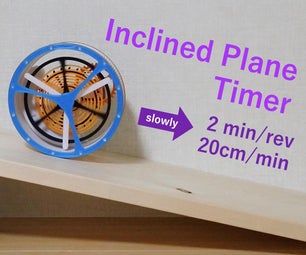Introduction: Cardboard Couch
Cardboard is an amazing material: light, strong, durable, biodegradable, and cheap (or free).
This Instructable looks to construct a couch made of cardboard which retains the original properties of the material while being able to hold the weight of a person or people as well as being comfortable to sit on.
In order to do so, pieces of cardboard will be glued together and then used like pieces of wood.
You will need the following:
MATERIALS:
- Cardboard (obviously)
- Flour
- Water
- Hot-glue
*Using other glues or sealants is optional
TOOLS:
- a Utility-Knife/Box-cutter
- a Jig-Saw (also a Circular Saw, but it is not absolutely necessary)
- a Pencil/Marker
- a Measuring Tape
- a Paint Brush
- a Saucepan or Pot as well as a Whisk or a Fork
*a Straight-Edge and some C-Clamps are optional
If you use Google Sketchup, you can download the file below in order to see the whole structure assembled, exploded as well as all of the dimensions in extra detail.
Attachments
Step 1: GLUE
The very first thing you will need to do, is to make your wheat-paste glue.
Because wheat-paste is incredibly cheap and about as strong as white glue, I used it to laminate the cardboard pieces together. Mix together 1 part of flour to 4 parts of water in a saucepan or pot and bring it to a boil. Make sure to whisk it constantly while it is heating, so that no chunks form. Use it immediately.
*For an additional wheat-paste resource, see the following link:
https://www.instructables.com/id/Wheatpaste/
Step 2: LAYOUT
With your wheat-paste cooling slightly, you will need to lay out the footprint of your cardboard. You will need to make one sheet that is 190cm x 120cm and another which is ~120cm x 80cm.
If you try to lay it out larger than the bigger sheet, it will be difficult to reach the whole surface area.
Step 3: LAYERS ON LAYERS
Now is the time-consuming part of building a cardboard couch...laminating (gluing) the layers of cardboard together.
Paint the top of your first layer with your glue and do the same for the bottom of the layer that you will place on top of it. Make sure to cover all seams so that no seams carry across multiple layers.
After about 12 layers are painted with wheat-paste glue, top and bottom (with the exception of the outside layers which just have the inner sides painted with glue), weigh them down with all of the heavy things you can find... Alternatively, you can use long(ish) boards to clamp the layers of cardboard together.
In either case, try to disperse the pressure across the surface area as evenly as possible.
Leave the carboard under weight or clamped until the wheat-paste glue has dried (probably 1-2 days depending on the humidity and temperature of the space).
When all the pieces have been glued together and have dried, they should be ~3.5cm thick.
Step 4: BUTT & BACK
After all of the cardboard has been glued together, you should have one piece measuring 190cm x 120cm and another measuring ~120cm x 80cm.
Take the piece which is 190cm x 120cm and cut two of each of the pieces shown in the rendering above. You should have one piece for the back of the couch and one piece for the seat, both of which have outside dimensions of 50cm x 190cm. The remainder of that piece should be enough to make two beams, measuring 8cm x 190cm, which will support the seat of the couch. You can use a circular saw to cut the very long cuts in combination with a jig-saw...or just a jig-saw for all of your cuts.
All of the pieces require groves cut out of them, so consult the rendering to see where to mark and then cut them.
Also...when making the long cuts, I clamped pieces of wood on either side of my laminated cardboard so that I could get a perfectly straight edge. When cutting the groves on the interior of the pieces, I pushed my jig-saw blade into the cardboard (which only went through 2 layers) and after turning the saw on, it slid right through to the other side.The process of cutting so many layers of cardboard is pretty dusty work but it goes easily.
Step 5: IT'S COMPLICATED
OK! So cutting the vertical pieces is a little bit complicated but they are necessary for the other pieces to click into.
Start by using the rendering above to mark where you will need to cut your 2nd piece of laminated cardboard, which measures ~120cm x 80cm. There are two very narrow grooves, shown in the rendering, which will be where the support beams for the seat will go, they are 3.5cm wide x 6cm deep. There are also two tongues shown on the rendering where the depth is not marked, the depth for those is 3.5 cm.
12 layers of cardboard, pressed and glued together, should equal about 3.5cm. If a tongue comes up a bit too thick when you are assembling the couch, then you can massage it a bit to get it to fit into the groove.
Using the jig-saw, cut where you have marked as closely as possible. The pieces all fit together very specifically so that they can be assembled without additional glue.
Step 6: BEGIN ASSEMBLY
Now you can finally begin your assembly...
Take the two long, narrow beams measuring about 8cm x 190cm which have the 2*2cm x 3.5cm groves cut out of them and push them into the groves of the vertical pieces of laminated cardboard. If that statement doesn't make sense, then just do what has been done in the images.
*You can use glue in the groves, if you want, but it is not necessary and you won't be able to take apart the whole structure later.
Step 7: BACK
Put the back piece into the groves of the vertical pieces and then onto the tongues, as it is shown.
*Again, you can use glue in the groves but it is not necessary.
Step 8: BUTT
Place the grooves of the seat onto the notches of the vertical pieces.
*I glued the seat piece to the support beams. It is not necessary but if I was to take the couch apart, the beams could stay connected to the seat without taking up much extra space. You can glue the seat to the vertical pieces if you have been gluing all of the other pieces together in previous steps.
Step 9: FINISHING
Some of your edges may be a little messy so I have made a little system to clean them up.
You will need some lengths of cardboard which are 10.5cm wide and as long as the edges that you are looking to cover. Score the piece, lengthwise, 3.5cm from either edge and fold the cardboard to make a "U" shape. Hot-glue the pieces onto the edges you want to cover.
If you want to cover up the tongues and grooves, you can also laminate one last piece over the seat and back. Personally, I like to have them exposed so that people can understand how the structure is made.
Step 10: CARDBOARD COUCH
Well, there it is.
Now you have a place to sit, read, nap, watch movies, play games, write, look at Instructables and so on which is made from recycled, organic as well as biodegradable materials.
If you have any questions/suggestions/comments, please don't hesitate to message me or comment below.
For more info on my other projects, check out the links below:
http://justintylertate.weebly.com/
www.facebook.com/JustinTylerTate/

Participated in the
Glue Challenge 2016

Participated in the
Epilog Contest 8















3 Comments
6 years ago
Very cool! Nice job!
6 years ago
That's not a couch. It's a bench
Reply 6 years ago
It is a couch when you put something soft on it!